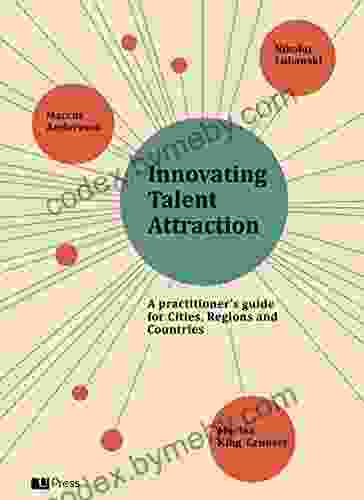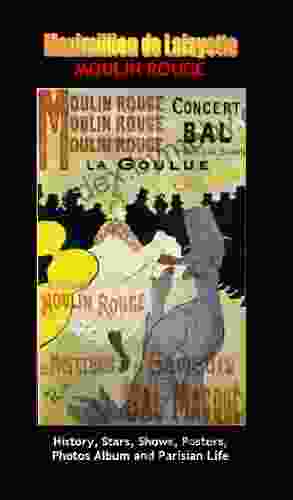How the Hippies Saved Physics: The True Story of a Revolutionary Scientific Revolution

In the annals of scientific history, the 1960s are often remembered as a time of great upheaval and change. The old guard of physics was overthrown, and a new generation of physicists, inspired by the ideals of the counterculture, emerged to revolutionize the way we think about the universe.
4.3 out of 5
| Language | : | English |
| File size | : | 2681 KB |
| Text-to-Speech | : | Enabled |
| Screen Reader | : | Supported |
| Enhanced typesetting | : | Enabled |
| Word Wise | : | Enabled |
| Print length | : | 401 pages |
One of the most important figures in this revolution was Fritjof Capra, a young physicist who had been deeply involved in the counterculture movement. Capra was convinced that the traditional approach to physics was too narrow and that it failed to take into account the insights of other disciplines, such as philosophy and ecology.
In 1975, Capra published a book called The Tao of Physics, which became a bestseller and helped to popularize the new approach to physics. The Tao of Physics argued that the universe is not a machine, but a living, breathing organism that is constantly evolving. This view of the universe was in stark contrast to the traditional view of physics, which saw the universe as a collection of dead matter.
Capra's book was just one of many that emerged from the counterculture movement and helped to change the way we think about physics. Other important books included The Dancing Wu Li Masters by Gary Zukav and The Holographic Universe by Michael Talbot.
These books helped to popularize the idea that the universe is a complex and interconnected system. They also helped to break down the barriers between science and other disciplines, such as philosophy and religion.
The counterculture movement had a profound impact on the development of modern physics. The new generation of physicists who emerged from this movement were not content to simply follow in the footsteps of their predecessors. They were willing to question the old assumptions and to explore new and innovative ideas.
As a result of their work, our understanding of the universe has changed dramatically. We now know that the universe is not a machine, but a living, breathing organism. We also know that the universe is not a collection of separate objects, but a single, interconnected system.
The counterculture movement may be long gone, but its legacy lives on in the work of the physicists who were inspired by its ideals. These physicists have helped to change the way we think about the universe, and they have laid the foundation for a new era of scientific discovery.
The Hippies Who Saved Physics
The story of how the hippies saved physics is a fascinating and thought-provoking one. It is a story about the power of imagination, the importance of questioning the status quo, and the transformative potential of the human spirit.
The hippies who saved physics were not your typical scientists. They were long-haired, bearded, and often barefoot. They listened to rock music, smoked pot, and dropped acid. They were not interested in conforming to the norms of the scientific establishment, and they were not afraid to challenge the old ways of thinking.
What the hippies did have was a deep passion for science. They were fascinated by the mysteries of the universe, and they were eager to learn more about it. They were also open-minded and willing to consider new ideas, even if those ideas were considered unconventional.
In the 1960s, the scientific establishment was dominated by a narrow and dogmatic approach to physics. The prevailing view was that the universe was a machine, and that it could be understood through the laws of mathematics. The hippies rejected this view. They believed that the universe was a living, breathing organism, and that it could not be fully understood through mathematics alone.
The hippies' approach to physics was inspired by the counterculture movement. The counterculture movement was a reaction against the materialism and conformity of the 1950s. It emphasized the importance of individual freedom, personal experience, and spiritual enlightenment.
The hippies' influence on physics was profound. They helped to break down the barriers between science and other disciplines, such as philosophy and religion. They also helped to popularize the idea that the universe is a complex and interconnected system.
The hippies' legacy lives on in the work of the physicists who were inspired by their ideals. These physicists have helped to change the way we think about the universe, and they have laid the foundation for a new era of scientific discovery.
The story of how the hippies saved physics is a testament to the power of the human spirit. It is a story about the importance of questioning the status quo, and the transformative potential of imagination.
The hippies who saved physics were not your typical scientists. They were long-haired, bearded, and often barefoot. They listened to rock music, smoked pot, and dropped acid. But they were also brilliant scientists, and they had a deep passion for understanding the mysteries of the universe.
The hippies' approach to physics was inspired by the counterculture movement. The counterculture movement emphasized the importance of individual freedom, personal experience, and spiritual enlightenment. The hippies believed that science could not be separated from the rest of human experience, and that it should be used to promote peace, love, and understanding.
The hippies' influence on physics was profound. They helped to break down the barriers between science and other disciplines, such as philosophy and religion. They also helped to popularize the idea that the universe is a complex and interconnected system.
The hippies' legacy lives on in the work of the physicists who were inspired by their ideals. These physicists have helped to change the way we think about the universe, and they have laid the foundation for a new era of scientific discovery.
4.3 out of 5
| Language | : | English |
| File size | : | 2681 KB |
| Text-to-Speech | : | Enabled |
| Screen Reader | : | Supported |
| Enhanced typesetting | : | Enabled |
| Word Wise | : | Enabled |
| Print length | : | 401 pages |
Do you want to contribute by writing guest posts on this blog?
Please contact us and send us a resume of previous articles that you have written.
 Book
Book Novel
Novel Page
Page Chapter
Chapter Text
Text Story
Story Genre
Genre Reader
Reader Library
Library Paperback
Paperback E-book
E-book Magazine
Magazine Newspaper
Newspaper Paragraph
Paragraph Sentence
Sentence Bookmark
Bookmark Shelf
Shelf Glossary
Glossary Bibliography
Bibliography Foreword
Foreword Preface
Preface Synopsis
Synopsis Annotation
Annotation Footnote
Footnote Manuscript
Manuscript Scroll
Scroll Codex
Codex Tome
Tome Bestseller
Bestseller Classics
Classics Library card
Library card Narrative
Narrative Biography
Biography Autobiography
Autobiography Memoir
Memoir Reference
Reference Encyclopedia
Encyclopedia Chris Scott
Chris Scott M R Mathias
M R Mathias Christine Williams
Christine Williams Josie Siler
Josie Siler Christopher Steiner
Christopher Steiner Yang Jwing Ming
Yang Jwing Ming Christine H Morton
Christine H Morton Michael Hodgson
Michael Hodgson Jesse Day
Jesse Day Claire Mills
Claire Mills Christopher C Pollitt
Christopher C Pollitt Claire Akin Mba
Claire Akin Mba Chunmei Du
Chunmei Du John R Little
John R Little Chris Robinson
Chris Robinson Chris Kratt
Chris Kratt Sarah Nisbett
Sarah Nisbett Alexandra Silber
Alexandra Silber Christopher S Wren
Christopher S Wren Diane H Tracey
Diane H Tracey
Light bulbAdvertise smarter! Our strategic ad space ensures maximum exposure. Reserve your spot today!

 W. Somerset MaughamEmpowering Urban Transformation: A Comprehensive Guide for Cities, Regions,...
W. Somerset MaughamEmpowering Urban Transformation: A Comprehensive Guide for Cities, Regions,... Beau CarterFollow ·15.7k
Beau CarterFollow ·15.7k Corey GreenFollow ·5.8k
Corey GreenFollow ·5.8k Isaias BlairFollow ·19.7k
Isaias BlairFollow ·19.7k Brandon CoxFollow ·13.6k
Brandon CoxFollow ·13.6k Nathaniel HawthorneFollow ·18.6k
Nathaniel HawthorneFollow ·18.6k Roberto BolañoFollow ·8k
Roberto BolañoFollow ·8k Felix CarterFollow ·2.9k
Felix CarterFollow ·2.9k Stan WardFollow ·9.5k
Stan WardFollow ·9.5k

 Rick Nelson
Rick NelsonThe Power of Positivity: 51 Motivational Quotes to...
In the tapestry of life, we encounter...

 Lee Simmons
Lee SimmonsThe Indian War of 1864: A Devastating Conflict in the...
The Indian War of 1864 was a brutal...

 Eddie Bell
Eddie BellQueen: The Unauthorized Biography: Unraveling the Secrets...
Prepare to delve into the captivating...

 Dion Reed
Dion ReedUnveiling the Imperfect Gems of Trauma and...
In the tapestry of...

 Desmond Foster
Desmond FosterThirty-Six Years in the Rockies: A Timeless Masterpiece...
A Journey Through Time and...
4.3 out of 5
| Language | : | English |
| File size | : | 2681 KB |
| Text-to-Speech | : | Enabled |
| Screen Reader | : | Supported |
| Enhanced typesetting | : | Enabled |
| Word Wise | : | Enabled |
| Print length | : | 401 pages |












